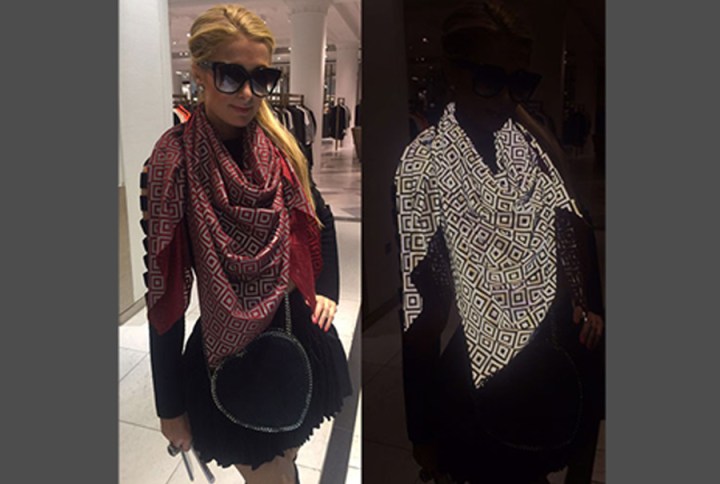
In 2009 Siddiqui was taking a photo of a group of friends standing in front of a bike. The flash from his smartphone bounced off a reflector on the bike in a manner that made it impossible to see his friends’ faces. Working with people who understood light and reflection, six years later the Ishu head scarf was introduced. Celebrities, and particularly actors, singers, and musicians weary of people grabbing smartphones and capturing their images and immediately plastering them all over social media were the first to get what the Ishu was all about. Their patronage and enthusiasm attracted others, according to The Ishu website.
The Ishu name is a combination of “isss” and “shu,” sounds that celebrities apparently make to ward off paparazzi. The effect of comparison photos is impressive. The scarf won’t help unless a flash is used by whomever is taking the picture, but when a flash is used, the result brilliant reflection off the scarf gives the appearance of a scarf just hanging in the air. Everything else is darkened. There are many sample celebrity images with and without flash on the Ishu website, all wearing the scarf.
The Ishu will be released August 22, 2016 and can be pre-ordered now. The price ranges from $268 to $478, according to Business Insider and a tie and pocket square will also be available. You can buy a phone case on the same website now.



